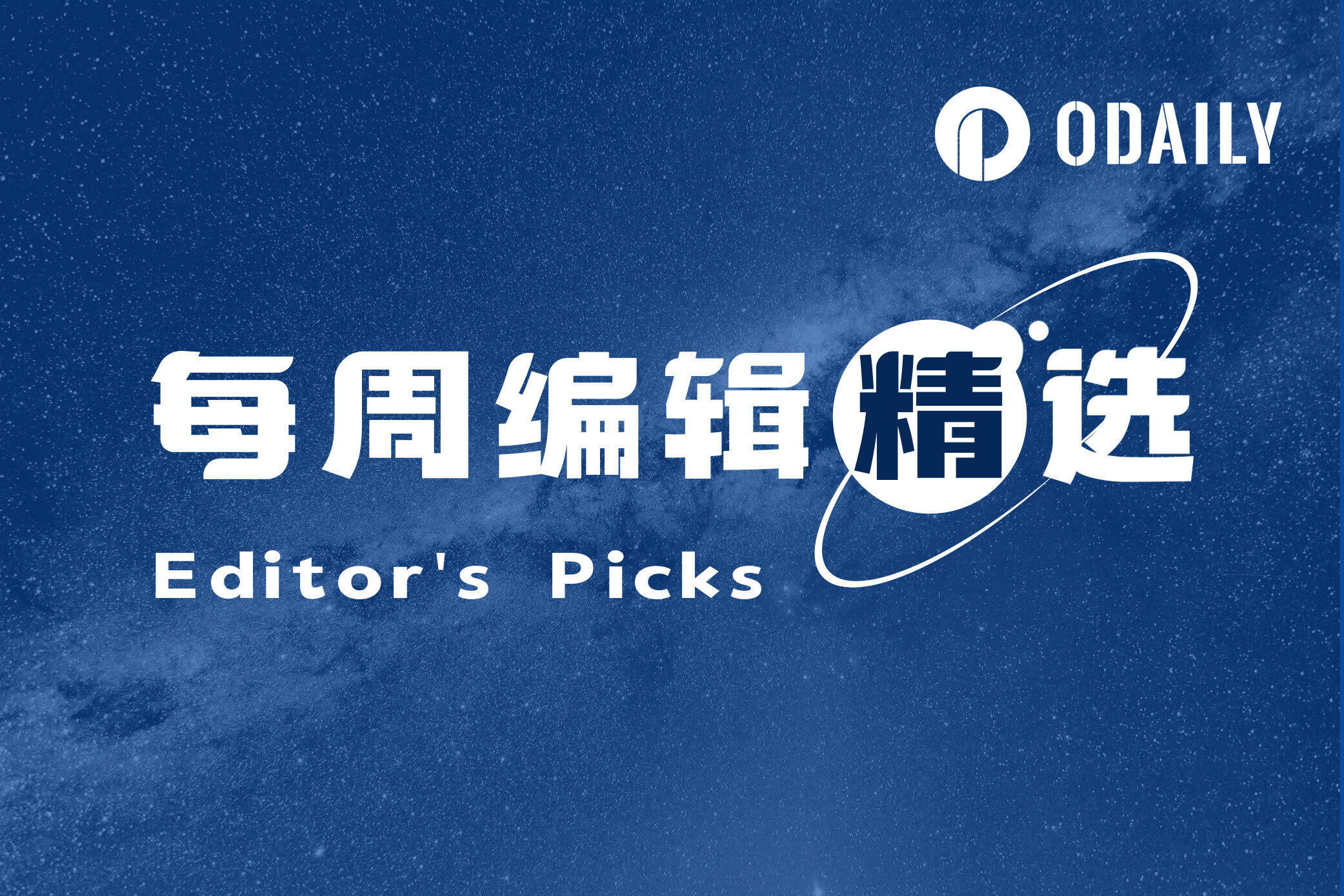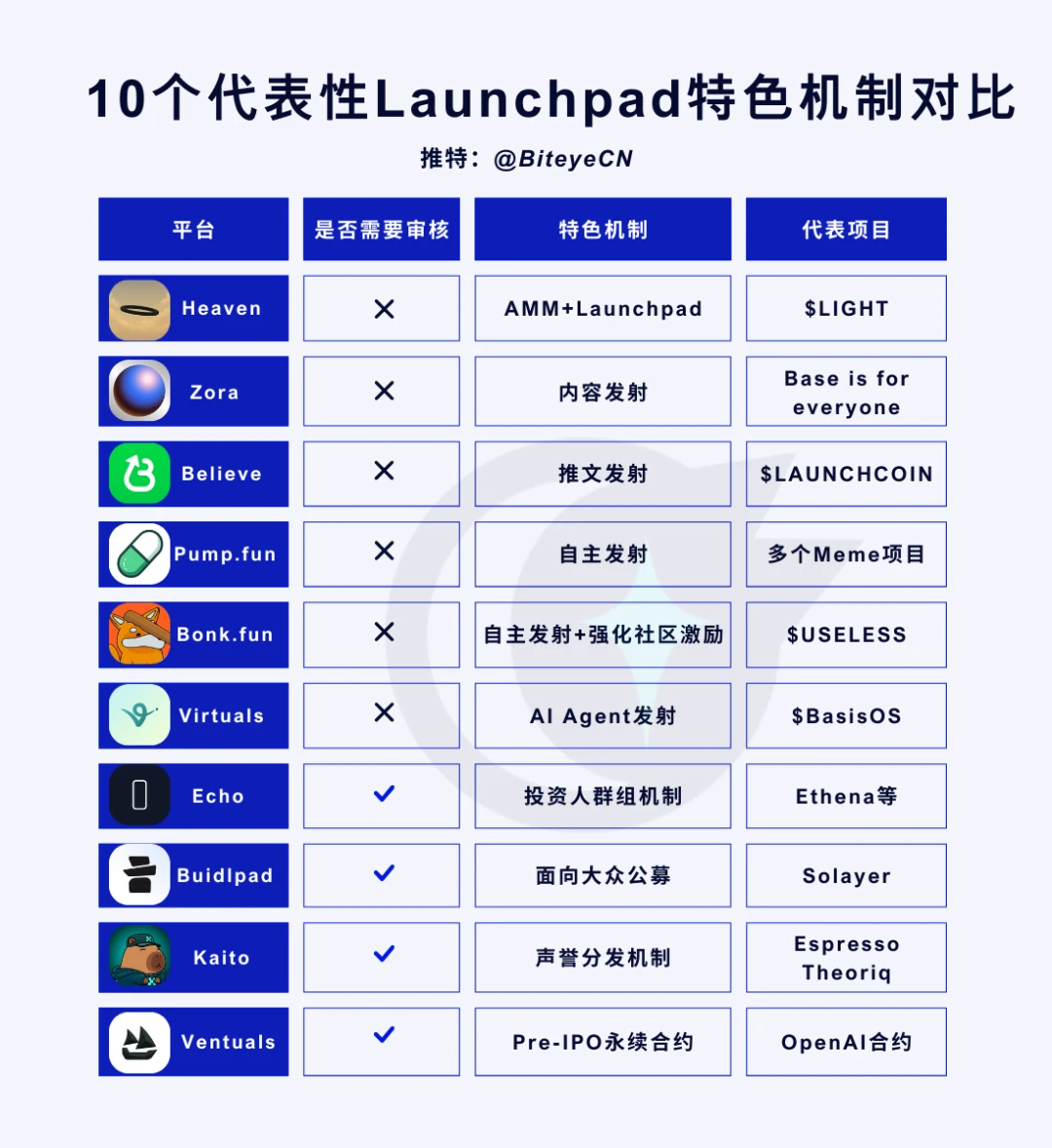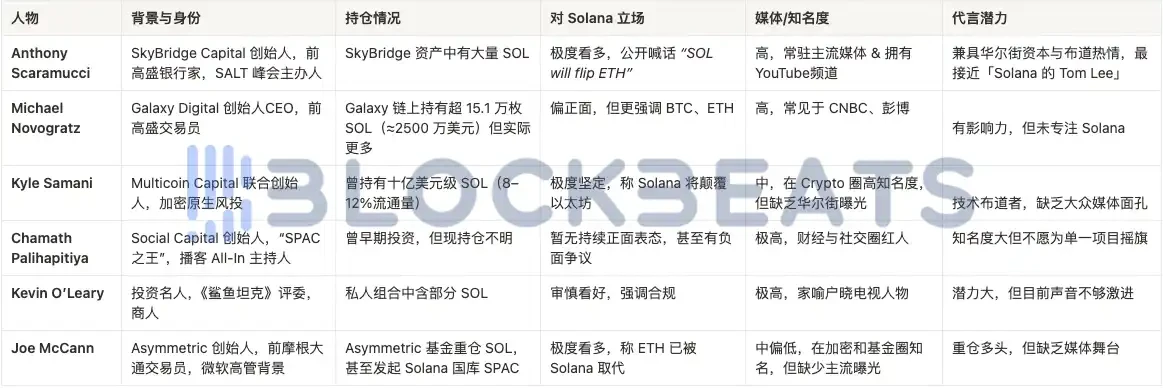"Weekly Editor's Picks" is a "functional" column of Odaily Planet Daily. Based on the extensive coverage of real-time information each week, the Planet Daily also publishes many high-quality in-depth analysis pieces, but they may be hidden among the information flow and trending news, passing you by.
Therefore, our editorial team will select some high-quality articles worth spending time reading and saving from the content published in the past 7 days every Saturday, providing you with new insights from the perspectives of data analysis, industry judgment, and opinion output, as you navigate the crypto world.
Now, let's read together:

Investment and Entrepreneurship
Crypto Investment: Betting on Fundamentals or Capital Flow?
There is no right or wrong in these two investment approaches. For investors, the key is whether you can systematically make confident predictions using them. More confident predictions can reduce volatility and downside risk; predictions that are more confident than market consensus can help you achieve excess returns.
The two approaches are not mutually exclusive. You can invest based on both fundamentals and capital flow simultaneously. In fact, the best risk-adjusted returns often result from a combination of both.
Historically, it has been worthwhile for crypto investors to be primarily capital flow-oriented.
The Death Domino of BTC: When Treasury Companies Go from "Diamond Hands" to Selling Off
In recent months, BTC treasury companies have been seen as important drivers of the crypto market and a strong foundation supporting Bitcoin prices. However, the reality may not be as solid as imagined. When price volatility combines with shareholder pressure, even treasury companies can quickly shift from "guardians" to "sellers."
Once some companies choose to sell BTC to buy back stocks, it will trigger a reflexive cycle: price drops → mNAV under pressure → more companies forced to sell → selling intensifies → price further drops.
A Review of the 5 Major Asian "Strategy" Public Companies' Leaders
Next Technology Holdings Group, Canggu, Boyaa Interactive, Nano Labs, DDC.
Grayscale's vision for 2025 is to deeply engage in AI, the Sui ecosystem, and meme culture. Its trust products are no longer solely focused on the hottest projects in the market but are also beginning to transform into a reservoir for discovering potential.
Although the "Grayscale Effect" is no longer present, the assets selected for Grayscale's crypto trust seem to still play a role as "Grayscale Select."
CeFi's outstanding loans amount to $17.78 billion, a quarter-on-quarter increase of 14.66% ($2.27 billion).
In DeFi applications, outstanding loans denominated in USD rebounded strongly from the first quarter, increasing by $7.84 billion (+42.11%) to reach $26.47 billion, setting a new historical high.
Digital Asset Reserve Companies (DATCOs) remain a core theme in the second quarter. From March to June, the rise of Ethereum reserve companies became a significant trend in the DATCOs space, while such entities were not common in the first few months of the year. Since Bitcoin DATCOs did not issue new debt, the outstanding debt balance of reserve companies with traceable data remained unchanged. Nevertheless, June 2028 is still a month to watch, as $3.65 billion in outstanding debt will mature.
Futures (including perpetual futures) saw a significant increase in open interest in the second quarter. As of June 30, the total open interest in futures on major platforms was $132.6 billion.
BTC and ETH Absorb Liquidity, Altcoins Use Buybacks to Build "Anti-Siphon Forts"
"From Growth Illusion to Cash Flow Reality: When Buybacks Become the Collective Narrative of Altcoins" sequel.
Although market sentiment seems to have shifted from sluggish to exuberant, the narrative dilemma of altcoins remains. How to break through the hype through buybacks tests the strategic vision of project teams.
The article reviews the short-term effects under different buyback strategies using LINK, ENA, BB, IP, PUMP, LISTA, and BONK as examples.
The market effects of buybacks are built on execution, transparency, and funding sustainability. For investors, the key is not just to see the words "buyback," but to ask three questions: Where does the money come from? How long will it last? Does it truly reduce circulating supply? The answers to these three questions determine whether the buyback plan becomes a foundation for price support or a short-term narrative being exploited. Only when the source of funds is solid, the execution chain is transparent, and the supply indeed contracts can buybacks become a long-term tool to navigate emotional cycles.

Also recommended: "Arthur Hayes' Latest Ten Thousand Word Interview: Autumn Correction, ETH Long-Term Target of $10,000 to $20,000," "Futu Fires the First Shot in Hong Kong Brokers' 'Crypto Transformation'," "200% Increase on First Day, 50% Drop in a Week: The Ice and Fire of Bullish IPO."
Policy and Stablecoins
According to the SEC's statement on tokenized securities released on July 9, 2025, tokenized securities are still securities, and market participants must consider and comply with federal securities laws when conducting these transactions. This means that while the current regulatory landscape for US stock token trading platforms is still somewhat unclear.
However, from the perspective of business similarity, referencing the compliance requirements of traditional brokers is very instructive for US stock token trading platforms.
In actual business scenarios, whether to provide services to US users, whether to facilitate/make market trades, whether to offer fiat currency deposits and withdrawals, and whether to personally hold/custody real stocks all have different licensing requirements for US stock token trading platforms.
Among them, FinCEN MSB (Money Services Business) registration (mandatory); ATS (Alternative Trading System) license (ambiguous); becoming a FINRA/SIPC member (recommended); transfer agent registration (not mandatory); CFTC (Commodity Futures Trading Commission) related registration (mandatory for derivatives business). Additionally, if services are not provided to US users, compliance difficulty is halved.
Hong Kong's Crypto Landscape: Tear, Confrontation, and Integration
In the same Hong Kong, within the same cryptocurrency ecosystem, some feel the excitement and opportunities brought by the industry's economic upturn; others feel the fatigue and loss brought by institutional and cultural friction.
Almost all mainstream Hong Kong brokers have ventured into the cryptocurrency business; on the other hand, some Crypto Natives who have joined compliant companies are experiencing a profound disillusionment.
New Forces in Stablecoins: An Overview of Eight Potential Projects and Yield Opportunities
cap, USD.AI, Level, OpenEden, Falcon Finance, Perena, Noble, Resolv,
Airdrop Opportunities and Interaction Guides
How Does Cap Build a "Self-Sustaining" Stablecoin? (Includes Interaction Tutorial)
Re-raising $10 million: A Participation Guide for Programmable Data Chain Irys
Bitcoin Ecosystem
From Store of Value to Capital Operations: The Next Cycle of BTC On-chain Finance
Bitcoin lacks composability, yield capability, and multi-chain liquidity. Most BTC holders either hold their assets long-term without action or rely on centralized platforms for limited interest, missing out on the vitality of on-chain finance.
More and more projects are attempting innovation in different directions: multi-chain expansion and interoperability, growth of low-risk yield products, increased institutional and compliant participation, and experimental grounds for innovative strategies.
Ethereum and Scalability
He Spent Billions Buying Ethereum, Says $4000 is the Bottom
The story of Tom Lee, the new representative of Ethereum's big players at BitMine.
Ethereum's Unstaking Scale Hits New Highs: What Are the Risks of Selling Pressure?
Although the market has not yet experienced systemic liquidation due to price decoupling, potential pressure is further pushing investors to exit early. The large-scale withdrawal of ETH staking is also related to the shift of funds towards new staking protocols. As Ethereum's investment focus shifts from retail to institutional investors, its staking market landscape is undergoing significant changes. Institutions have multiple demands for compliance and stability, such as the need for clear legal entities and compliance processes, which decentralized protocols struggle to meet.
The rising scale of ETH unstaking is also driven by profit-taking demands resulting from price increases.
However, there is no need for excessive concern; overall confidence in Ethereum remains unshaken, especially as the continuity of institutional funds further enhances market resilience.
ETH Approaching New Highs: Which "Ethereum Ecosystem" Alpha Projects Are Worth Watching?
BMNR, Ethena, Pendle, Uniswap, Fluid, Lido, Aave, Curve, SKY, Spark, Chainlink, Pengu.
Also recommended: "ETHGlobal NYC Hackathon Concludes: Summary of the Top Ten Awarded Projects."
Multi-Ecosystem and Cross-Chain
Who Will Carry the Solana Flag? Candidates for Solana's "Tom Lee"
One of Wall Street's most steadfast Solana Maxis, Anthony Scaramucci (the best candidate), Wall Street crypto investment representative Michael Edward Novogratz, Multicoin Capital's Kyle Samani, Silicon Valley venture capitalist Chamath Palihapitiya, Canadian businessman Kevin O'Leary, and Joe McCann, founder of the crypto hedge fund Asymmetric.

After OKB Hits a New All-Time High, How to Participate in This X Layer Meme Trend?
X Layer Meme Tool Article.
DeFi & CeFi
Data Doesn't Lie: Why Pendle is the Hidden Gem of DeFi?
Pendle is quietly creating an annual revenue of $43.68 million with a fully diluted valuation (FDV) of $1.53 billion.
Ironically, those public chains with valuations three to five times higher than Pendle have far less real business volume.
How to Effectively Utilize Pendle's New Weapon Boros
A comprehensive analysis of trading, hedging, and arbitrage applications of Boros.
Also recommended: "Chainlink In-Depth Research Report: From Oracles to On-Chain Financial Infrastructure, LINK's Flywheel Mechanism and Future Path."
Weekly Hotspot Recap
In the past week, ETH briefly fell below $4,100 (Market Outlook); OKB repeatedly broke historical highs, X Layer Launched Testnet, with OKB serving as the native Gas token; BNB reached a historical high; Kanye West Launched Meme Coin YZY;
Additionally, in terms of policy and macro markets, Trump is considering firing Federal Reserve Governor Cook; the Federal Reserve is studying the application of tokenization and artificial intelligence in payments; Wyoming launched the Frontier stablecoin FRNT, becoming the first state in the U.S. to issue a stablecoin; Japan will approve the first yen-denominated stablecoin JPYC, which will be launched on Ethereum, Avalanche, and Polygon; Japanese media: Stablecoin JPYC's issuance scale is projected to reach 1 trillion yen in three years, intended for corporate payments and DeFi asset management; Shanghai Composite Index Hits a Nearly 10-Year High; Caixin: Hong Kong Monetary Authority Encourages RWA Cases in New Energy and Shipping Trade, not supporting real estate projects; Thailand will launch a cryptocurrency exchange plan to facilitate payments for foreign tourists;
In terms of opinions and statements, WhaleWire founder: High leverage in the crypto market may trigger a major collapse; Andrew Kang: ETH may face a $5 billion level liquidation, dropping to the $3,200-$3,600 range; Tom Lee: A historic opportunity is unfolding in the Ethereum ecosystem, and we will witness an unprecedented wave of innovation; Canary Capital CEO: Bitcoin may rise to $150,000 this year, while Ethereum's upward momentum may not last; Santiment: Retail sentiment has turned extremely bearish, which may signal a [market reversal](https://www.odaily.news/zh-CN/newsflash/444084; Fluid community initiated a token buyback proposal); Toly: The crypto market should not fall into the trap of "special assets + yield" being a superior logic; UBS: The trillion-dollar market demand for stablecoins may not be real; Goldman Sachs: Compared to Circle, we are more optimistic about Robinhood, and it is too early to say that stablecoins will disrupt traditional finance; Ondo executives: Tokenization has the infrastructure needed for success; The ETF Store president: Treasury company stocks should be viewed as derivatives of BTC and ETH; The Rollup founder: Heard that several large SOL treasury companies will launch in September, expecting to complete fundraising within 1-2 weeks;
In terms of institutions, large companies, and leading projects, Bullish received $1.15 billion from its IPO in the form of stablecoins; Grayscale submitted the S-1 filing for the DOGE ETF; Strategy's stock price fell to a nearly four-month low, with Saylor stating that issuance restrictions will be relaxed; U.S. stock BNB treasury company WINT was delisted by Nasdaq for violations (Interpretation); CMB International Securities has officially started providing virtual asset trading services; Coinbase updated its derivatives rules, offering tiered subsidies for USDC used as collateral for contracts, with annual subsidies reaching up to 12% ("Trading and Yield Wall Integration" Industry Trend Interpretation); Faraday Future launched the first C 10 Treasury plan in U.S. stocks and released the C 10 index; MetaMask launched the mUSD stablecoin, backed by cash and short-term U.S. Treasury bonds; The LayerZero Foundation's proposal to acquire Stargate has begun voting, with a support rate of 97.07%; Wormhole plans to acquire Stargate at a high price and requests to suspend the "LayerZero Acquiring STG" vote (Interpretation); Gold Token XAUm launched on Sui, with the Sui Foundation including XAUm in its strategic reserves; Somnia has opened short selling qualification inquiries (Community feedback is poor); Mitosis announced its token economic model, with a genesis airdrop ratio of 10%; Boundless announced its token economic model, with community sales and airdrop distribution of 6%; Mitosis launched airdrop inquiries; Sapien launched airdrop claims; Hemi released its token economics: a total of 10 billion tokens, with 32% allocated to the community and ecosystem;
In terms of data, Bitcoin and Ethereum spot ETFs set a weekly trading volume record; Tokenized asset management reached a historic high, reaching $270 billion; Hyperliquid became the highest revenue-generating company per capita globally;
In terms of security, over 370,000 chat records from Musk's Grok were leaked; OneKey's founder: Apple devices have a 0-day vulnerability, advising users to upgrade their device systems to the latest version as soon as possible; ODIN•FUN's founder: Some funds from the hacker have been frozen, and an audit repair is underway… Well, it has been another eventful week.
Attached is the Weekly Editor's Picks series.
See you next time~
免责声明:本文章仅代表作者个人观点,不代表本平台的立场和观点。本文章仅供信息分享,不构成对任何人的任何投资建议。用户与作者之间的任何争议,与本平台无关。如网页中刊载的文章或图片涉及侵权,请提供相关的权利证明和身份证明发送邮件到support@aicoin.com,本平台相关工作人员将会进行核查。




